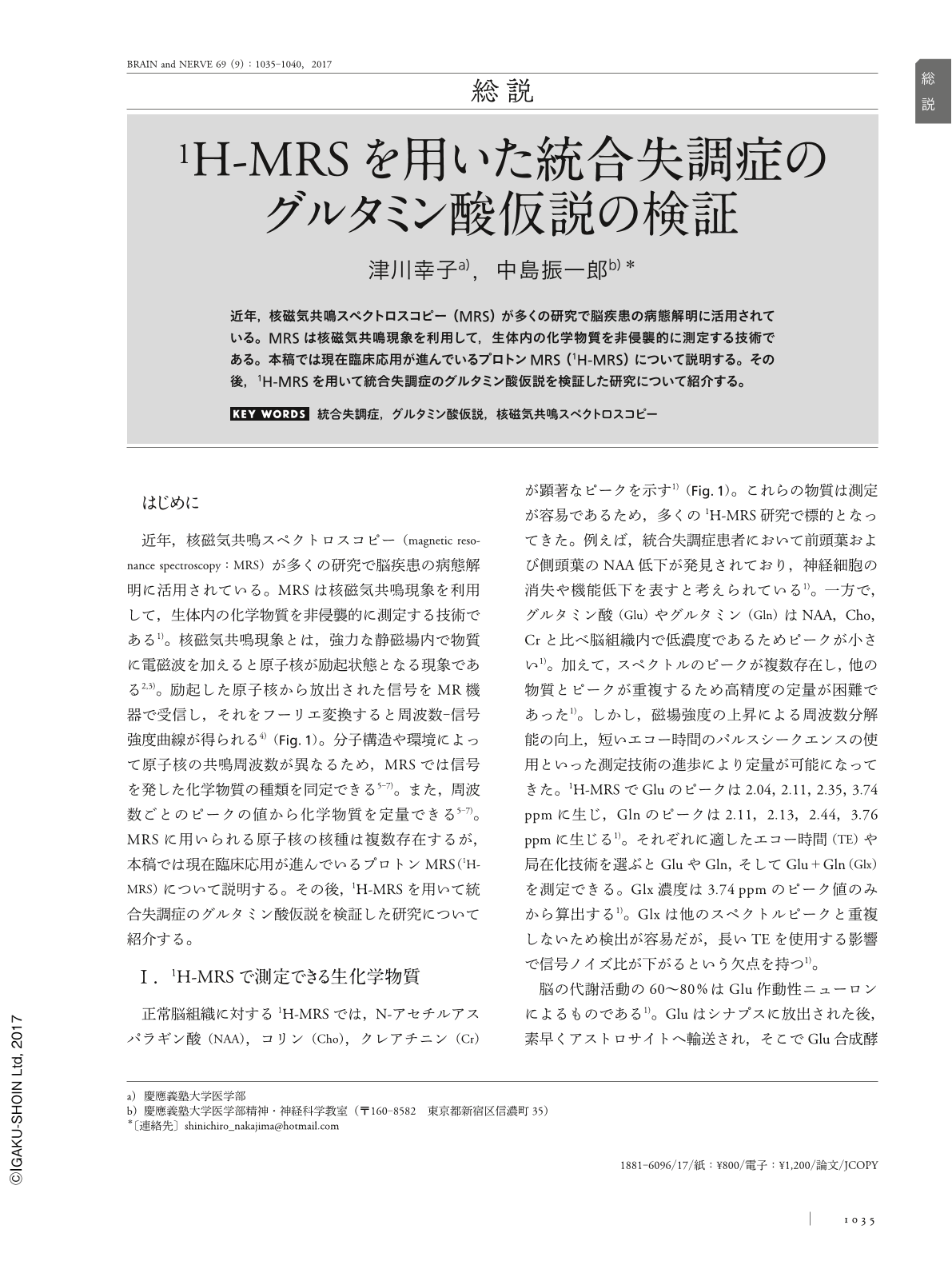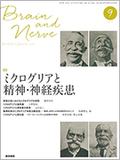Japanese
English
総説
1H-MRSを用いた統合失調症のグルタミン酸仮説の検証
To Test Glutamate Hypothesis for Schizophrenia Utilizing Proton Magnetic Resonance Spectroscopy
津川 幸子
1
,
中島 振一郎
2
Sachiko Tsugawa
1
,
Shin-ichiro Luke Nakajima
2
1慶應義塾大学医学部
2慶應義塾大学医学部精神・神経科学教室
1Keio University School of Medicine
2Department of Neuropsychiatry, Keio University School of Medicine
キーワード:
統合失調症
,
グルタミン酸仮説
,
核磁気共鳴スペクトロスコピー
,
schizophrenia
,
glutamate hypothesis
,
magnetic resonance spectroscopy
Keyword:
統合失調症
,
グルタミン酸仮説
,
核磁気共鳴スペクトロスコピー
,
schizophrenia
,
glutamate hypothesis
,
magnetic resonance spectroscopy
pp.1035-1040
発行日 2017年9月1日
Published Date 2017/9/1
DOI https://doi.org/10.11477/mf.1416200863
- 有料閲覧
- Abstract 文献概要
- 1ページ目 Look Inside
- 参考文献 Reference
近年,核磁気共鳴スペクトロスコピー(MRS)が多くの研究で脳疾患の病態解明に活用されている。MRSは核磁気共鳴現象を利用して,生体内の化学物質を非侵襲的に測定する技術である。本稿では現在臨床応用が進んでいるプロトンMRS(1H-MRS)について説明する。その後,1H-MRSを用いて統合失調症のグルタミン酸仮説を検証した研究について紹介する。
Abstract
Recent advancement in magnetic resonance spectroscopy (MRS) has elucidated the pathophysiology of mental illness, including schizophrenia. MRS is a neuroimaging technique that non-invasively measures chemicals, using nuclear magnetic resonance. This narrative review explains proton MRS (1H-MRS) and introduces pivotal studies to examine a glutamate hypothesis for schizophrenia, employing 1H-MRS.

Copyright © 2017, Igaku-Shoin Ltd. All rights reserved.


